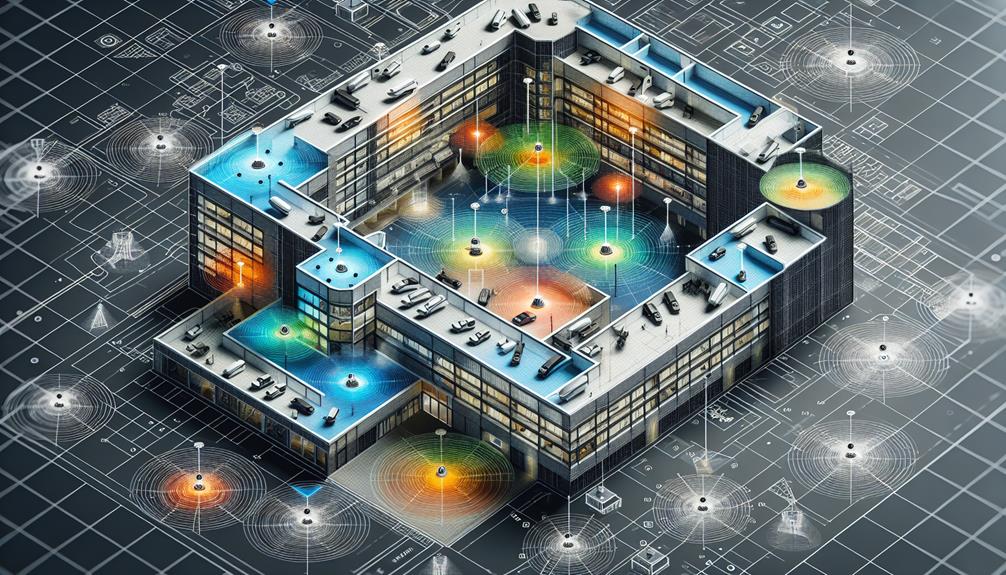I’d say the most significant innovations in facial recognition for surveillance are AI-enhanced systems like Amazon Rekognition, AI CCTV cameras with deep learning algorithms, and technologically advanced applications such as Thales’ LFIS, which offers high acquisition rates for facial features. These cutting-edge technologies have dramatically improved the accuracy and efficiency of facial recognition in different environments. If you want to stay ahead in this rapidly evolving field, you’ll need to stay informed on these and other advancements. Furthermore, the integration of machine learning techniques has allowed these systems to adapt to various lighting conditions and crowd densities, enhancing their usability in real-world scenarios. As more industries adopt top facial recognition applications for security, marketing, and customer experiences, the ethical considerations surrounding privacy and data protection will also become increasingly important. Keeping abreast of regulatory changes will be crucial for developers and users alike in leveraging these powerful technologies responsibly. As organizations explore the best uses of facial recognition, balancing innovation with ethical responsibility will be essential to maintaining public trust. Businesses and governments must implement robust data protection measures to prevent potential misuse and ensure compliance with evolving regulations. Ultimately, the success of these technologies will depend on their ability to deliver security and convenience while respecting individual privacy rights.
Key Takeaways
- Google's FaceNet achieves a 99.63% accuracy rate in facial recognition.
- Facebook's DeepFace technology matches faces with 97.25% accuracy.
- Thales' Live Face Identification System (LFIS) attains a 99.44% face acquisition rate.
- NIST conducts evaluations to advance facial recognition technologies.
- AI-adapted face recognition systems improve surveillance by adapting to diverse scenarios.
Advanced Surveillance Technologies
As we venture further into 2024, several cutting-edge surveillance streams are emerging, enhancing standard live video monitoring and managed video surveillance with advanced technologies like augmented reality and artificial intelligence. This fusion aims to leverage facial recognition technology, a significant contributor to these innovative surveillance technologies. Recent advancements include Google's FaceNet, which boasts an impressive 99.63% accuracy rate in facial recognition.
Other notable developments involve Facebook's DeepFace program, boasting a 97.25% accuracy rate, and Thales' facial recognition software, LFIS, achieving a face acquisition rate of 99.44% in under five seconds.
To refine the precision of facial recognition systems, the National Institute of Standards and Technology (NIST) continues to conduct extensive evaluations. NIST's tests assess the performance of various face detection algorithms using deep learning techniques, examining how they process biometric data and their reliability across different demographics. This ongoing enhancement of surveillance technologies guarantees image processing capabilities continue to improve, driving diverse applications of facial recognition technology.
AI Integration for Enhanced Security
By fusing artificial intelligence with facial recognition technology, advanced access control systems are yielding faster and more accurate security solutions, thoroughly transforming the landscape of surveillance applications. This integration has several key benefits:
- Enhanced Security Features: AI integration allows for advanced security features such as video authorization and multi-factor authentication.
- Real-time Surveillance: Facial recognition technology with AI provides real-time video screening, ensuring prompt responses to security incidents.
- Speaker Verification Integration: AI-powered speaker verification is embedded in these systems, enhancing identity verification accuracy.
- Adaptable Performance: AI-adapted face recognition systems are capable of adapting to diverse scenarios, ensuring better performance and accuracy under various conditions.
These improvements collectively lead to enhanced security and surveillance efficiency.
I'm impressed by how seamlessly AI integrates with facial recognition technology, positively impacting the efficacy of access control systems, law enforcement, public spaces, and surveillance applications as a whole. The future of surveillance is unquestionably bound to innovations in facial recognition technology empowered by artificial intelligence.
Mapping Surveillance to Enhance Safety

In tandem with facial recognition technology, surveillance systems can now map and track individuals in real-time, greatly enhancing safety measures in various environments. This integration allows law enforcement agencies to swiftly identify and monitor individuals in crowded areas or restricted zones, significantly aiding security efforts. Moreover, advancements in artificial intelligence and machine learning have led to more sophisticated algorithms that process facial data more efficiently, improving facial recognition accuracy. These developments not only bolster the effectiveness of surveillance systems but also raise important ethical considerations regarding privacy and civil liberties. As the technology continues to evolve, a balance must be struck between enhancing security and safeguarding individual rights.
Mapping surveillance with facial recognition technology enables quick identification of persons of interest or potential threats, thereby enhancing situational awareness and response times in security operations.
The real-time tracking capabilities of facial recognition technology revolutionize the way we secure public spaces. By pinpointing the location and movements of individuals, authorities can respond promptly to potential threats, ensuring a safer and more controlled environment. This precise monitoring technology is invaluable in law enforcement, as it streamlines the process of identifying and addressing security breaches.
Frequently Asked Questions
Which Technology Is Best for Face Recognition?
"Personally, I prefer using deep learning algorithms like Convolutional Neural Networks (CNNs) which excel in facial analysis and matching, ensuring high accuracy in biometric identification and security applications, but also raise privacy concerns."
How Is Facial Recognition Used in Surveillance?
As I comprehend the absorption of facial recognition into surveillance, I recognize its pervasive implications: privacy concerns are heightened, ethical boundaries blur, and law enforcement leverages biometric identification for access control and real-time monitoring.
What Is the Most Accurate Face Recognition?
'As I evaluate facial recognition algorithms, I find the most accurate ones harness the power of deep learning, leveraging advanced machine learning techniques and artificial intelligence in biometric authentication with nuanced facial analysis for best security applications, respecting user privacy.'
What Is the Best Face Detection Model?
For the best face detection model, I'd recommend a deep learning approach using neural networks and computer vision, as this allows for robust feature extraction, precise facial analysis, and reliable biometric identification while addressing privacy concerns.









